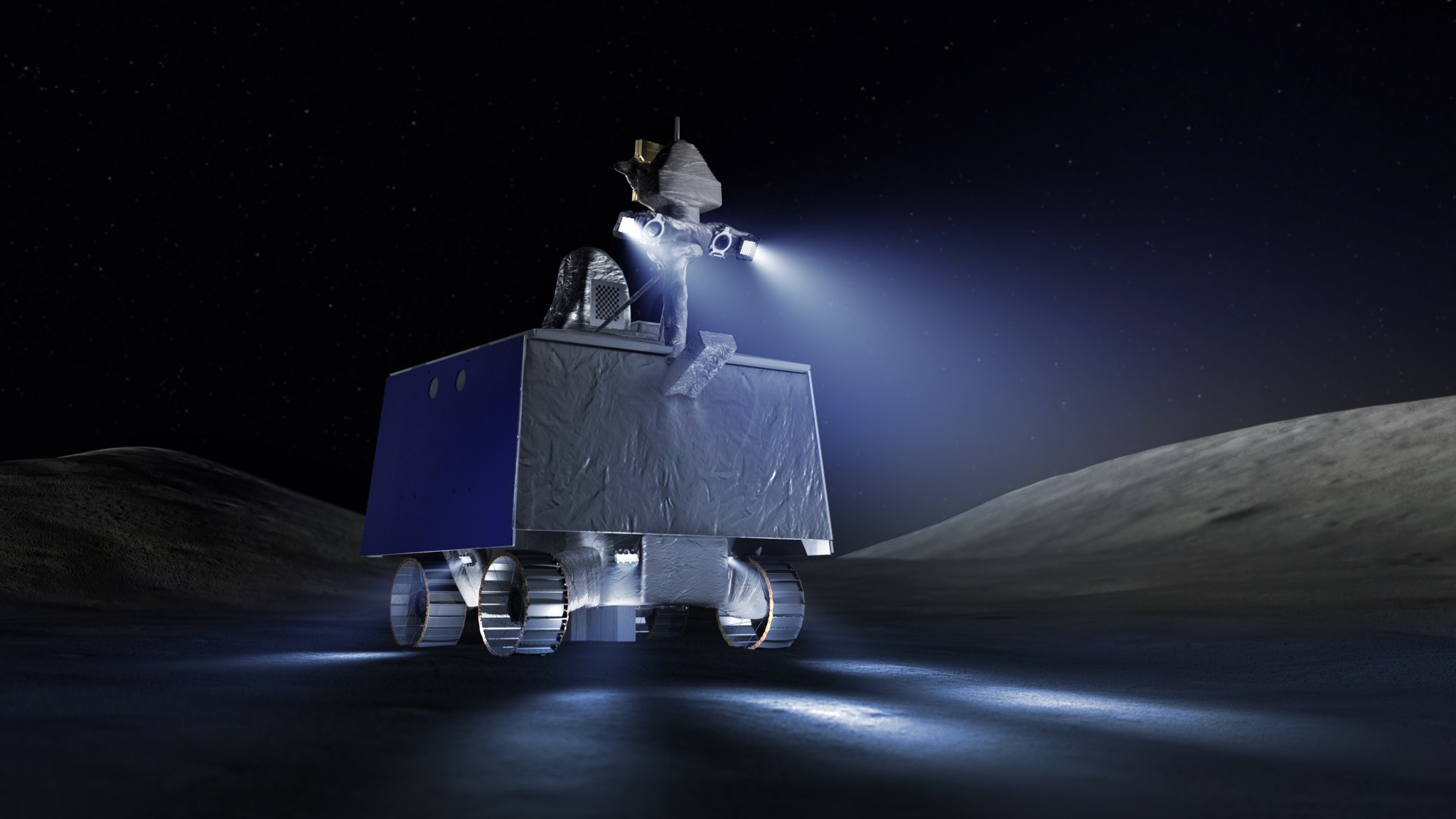
We recently completed a fantastic series of tests with our lunar delivery CLPS vendor, Astrobotic, at NASA’s Glenn Research Center in Cleveland. I was proud to visit for part of the two weeks, where we executed dozens of egress tests, rolling the newest VIPER Moon Gravitation Representative Unit – “MGRU3” – prototype rover down the Griffin lander rampways.
This MGRU3 rover has a flight-like driving system and imaging systems, with an attached dummy mass, to recreate the center of gravity of the actual VIPER lunar rover. We attempted both normal egressing (where all conditions are ideal), as well non-ideal conditions – all with the hope of learning more about how VIPER could behave during the mission. The testing also revealed areas to improve the ramps themselves, based on how they interacted with the rover’s wheels.
Some of the simulated anomalous rampway conditions included having one ramp land in a crater, or up on a rock, or both conditions at the same time, thereby twisting the rampways. Another scenario had the ramps “splayed” (non-parallel) where the distance between the ramps changed as the rover rolled down. These conditions challenged the rover driver’s ability to safely navigate down the ramps.
Finally, after several days of getting comfortable with the rover egresses, we moved the operations team into another room, where their only visual cues came from the rover’s cameras, as well as simulated imagery from the lander cams – just like it will be on the real mission. The VIPER drivers quickly learned how to understand the environment through the eyes of the rover, decreasing mission risk.
A wonderful couple weeks with both the VIPER and Astrobotic teams working together!
Go VIPER!
– Dan Andrews, VIPER Project Manager


























